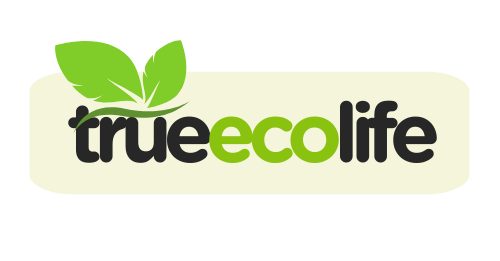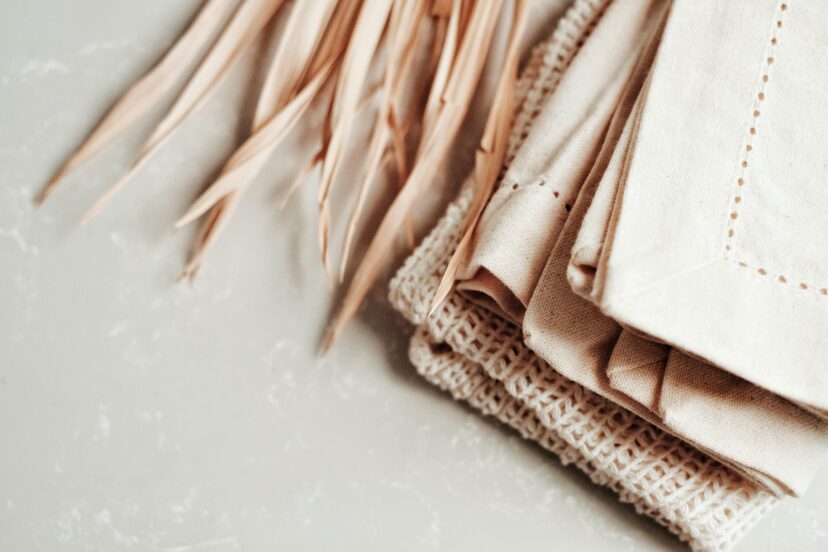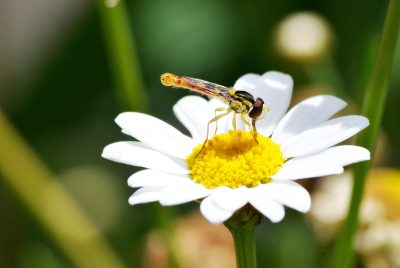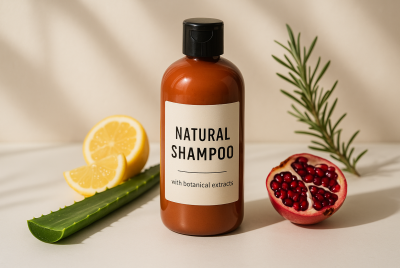Eco-Futurism in Fashion: 6 Sustainable Textile Materials That Will Help You Make Environmentally-Friendly Choices
We may earn a commission for purchases made using our links. Please see our disclosure to learn more.
Fashion has changed over the years, and it’s time we adapt to these changes. Have you thought about how your clothing affects the environment? Maybe not. Because most of us are easily hooked with stylish clothes regardless of where they came from (or what they’re made of). Let’s change our mindset about fashion! One of the largest polluters in the world is the fashion industry, but fortunately, things are changing. Sustainable textile materials that are better for the environment and your conscience are being used by more brands. Let’s discuss six incredible textiles that will help you choose better clothing that is good for both you and the planet.
1. Organic Cotton: The Classic Sustainable Fabric
What Makes It Sustainable?
Organic cotton is more sustainable than regular cotton. It is better for the environment and your skin because it is grown without harmful pesticides or artificial fertilizers. Organic cotton maintains cleanliness compared to conventional cotton, which wastes water and chemicals.
Why Should You Choose It?
- It is biodegradable and recyclable, so it will not end up in a landfill forever.
- Uses far less water than ordinary cotton—up to 91% less!
- No toxic chemicals, so it is ideal for people with sensitive skin.
Where Can You Find It?
Many brands, like Patagonia and People Tree, are embracing organic cotton to create stylish, eco-friendly pieces.
2. Hemp: The Superhero of Sustainable Textiles
Why Is Hemp a Powerhouse?
If there was a fabric superhero, hemp would be it. This thing is tough, durable, and grows like a weed—literally. Don’t worry, it’s also comfortable. Hemp fabric is breathable and requires very little water. It actually improves soil health rather than destroying it.
Benefits of Hemp Clothing:
- It’s naturally resistant to pests, which means no need for chemical pesticides.
- Gets softer the more you wear and wash it—like a fine wine, but for clothes.
- Way stronger than cotton, so your hemp clothing will last for years.
Fun Fact:
Hemp was banned in many places because of its connection to cannabis, but now it’s making a major comeback in sustainable fashion. About time, right?
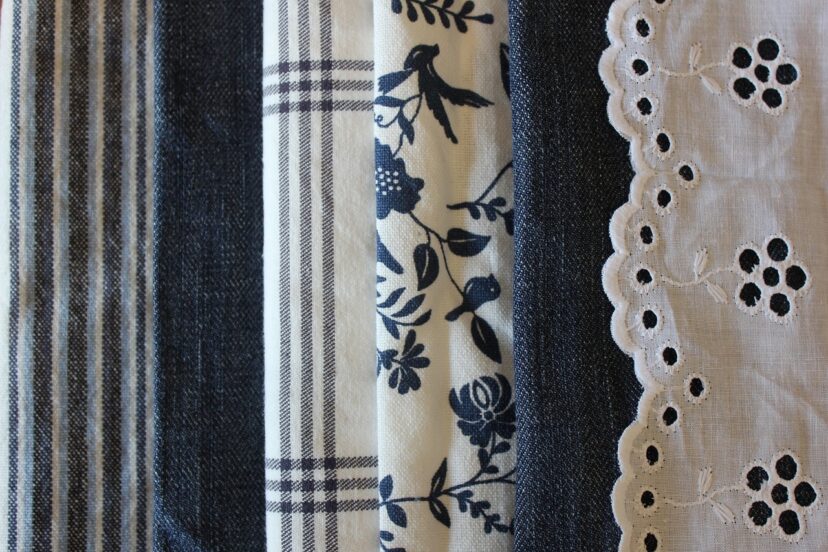
3. Tencel (Lyocell): The Eco-Friendly Alternative to Synthetic Fabrics
How Is Tencel Made?
Tencel is one of those materials that looks nice but is very practical. It is manufactured using a closed-loop processing technique and wood pulp, usually from eucalyptus trees. Meaning all of the water and solvents used are recycled. Tencel is often used in dresses and shirts.
Why You’ll Love It:
- Soft and breathable, like a second skin.
- Absorbs moisture like a pro, making it perfect for workout clothes.
- Completely biodegradable, so no guilt when it’s time to say goodbye.
Best Uses:
Tencel works well for dresses, activewear, and even bed sheets. More and more brands are using it as a sustainable alternative to synthetic fabrics.
4. Piñatex: The Pineapple-Based Leather Alternative
What is Piñatex?
Have you ever worn clothes made from pineapples? Yes, pineapple leather is a thing. Piñatex is manufactured from pineapple leaf fibers. They transform agricultural waste into a durable and elegant leather alternative. No plastic, no cruelty—it’s a win-win situation for everyone.
Reasons to Switch to Piñatex:
- It’s made from waste, which means fewer resources are needed.
- No animal products involved—vegan-friendly and cruelty-free.
- Looks and feels like real leather, but way more sustainable.
Where It’s Used:
Piñatex is popping up everywhere, from sneakers to handbags. It’s a dream come true for anyone looking for stylish, sustainable alternatives to traditional leather.

5. Bamboo Fabric: Soft, Sustainable, and Stylish
Why Is Bamboo a Green Choice?
Bamboo is like that overachiever in class—it grows insanely fast, doesn’t need pesticides, and makes an incredibly soft fabric. This makes it one of the best renewable resources for clothing.
Pros of Bamboo Fabric:
- Naturally antibacterial, so your clothes stay fresher for longer (goodbye, odors!).
- Super soft—some even say it’s softer than cotton.
- Uses way less water compared to traditional crops like cotton.
Perfect For:
Bamboo fabric is commonly found in activewear, underwear, and loungewear—basically anything that needs to be soft and comfy.
6. Recycled Fabrics: Turning Trash into Fashion
What Are Recycled Textiles?
Recycled fabrics take old materials—like discarded clothes, plastic bottles, and even fishing nets—and turn them into new textiles. Instead of letting waste pile up in landfills, why not give it a second life?
Key Benefits:
- Keeps plastic out of the ocean (yes, even those pesky water bottles!).
- Uses way less energy and water than producing new fabrics.
- Helps reduce fashion waste, which is a huge problem right now.
Examples of Recycled Fabrics:
- Econyl, made from recycled fishing nets.
- Repreve, crafted from plastic bottles.
Scientific Insights on Sustainable Textile Materials
The shift towards eco-friendly textiles is gaining momentum as research highlights the benefits of alternative materials in fashion. A critical review on sustainability in textiles explores the impact of organic cotton, hemp, and bamboo fibers, emphasizing their lower environmental footprint compared to conventional fabrics. Meanwhile, a comprehensive study on sustainable textile innovations examines how recycled materials, such as Econyl and Piñatex, contribute to waste reduction and circular fashion practices. These findings support the growing need for sustainable alternatives that can help reshape the future of fashion while minimizing environmental harm.
Top Sustainable Fashion Products
If you’re looking to build a more eco-friendly wardrobe, these sustainable textile material products are a great place to start. All of them are made from organic cotton, hemp, Tencel, Piñatex, bamboo, or recycled fabrics, ensuring a lower environmental impact.
1. Organic Cotton Clothing
- Organic Cotton T-Shirt – A soft, breathable tee made from 100% GOTS-certified organic cotton, perfect for everyday wear.
- Burt’s Bees Baby Organic Cotton Pajamas – Cozy and safe for little ones, these pajamas are chemical-free and super soft.
2. Hemp Apparel
- Hemp T-Shirt For Men – A durable yet soft hemp-cotton blend t-shirt that gets softer with every wash.
- Unisex Organic Hemp Socks – Breathable, moisture-wicking socks made from pure hemp fibers, great for sensitive skin.
3. Tencel (Lyocell) Clothing
- Bamboo Dress – A flowy, breathable dress made from ultra-soft Tencel fabric, perfect for casual or dressy occasions.
- Boody Women’s Tencel-Lyocell Leggings – Stretchy, moisture-wicking leggings that feel light as air on your skin.
Switching to sustainable textile materials doesn’t mean sacrificing style or comfort. These eco-friendly options help reduce waste, conserve resources, and keep our planet cleaner—while keeping you looking great!
Making the Switch: How to Incorporate Sustainable Fabrics into Your Wardrobe
- Check Labels: Look for certifications like GOTS (Global Organic Textile Standard) or OEKO-TEX.
- Invest in Quality: Buy fewer, better pieces that last longer.
- Shop Second-Hand: Thrifting is a great way to be sustainable and find unique pieces.
- Support Sustainable Brands: Do a little research before shopping.
- Care for Your Clothes: Wash with cold water, use eco-friendly detergents, and air dry to make them last.
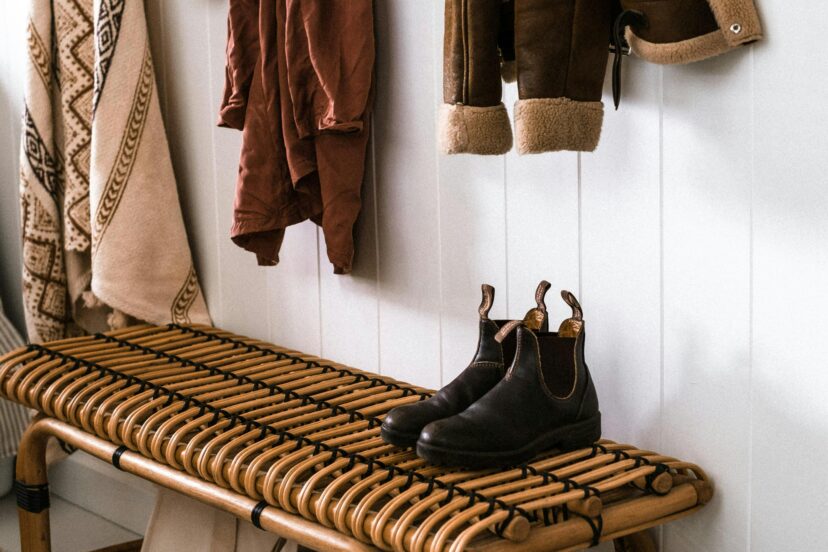
Final Thoughts
The fashion industry is going through a much-needed transformation, and it’s exciting to see. Choosing sustainable textile materials isn’t just a trend—it’s a movement. Next time you’re shopping, think beyond fast fashion. Your choices matter, and together, we can make fashion a force for good. Pair your sustainable clothes with eco-friendly shoes!
FAQs About Sustainable Textile Materials
1. Are sustainable fabrics more expensive?
Sometimes, but they last longer, so you’ll save money in the long run.
2. Is vegan leather really sustainable?
Not always. Many vegan leathers are plastic-based, so opt for eco-friendly alternatives like Piñatex or mushroom leather.
3. Can I find sustainable fabrics in regular fashion stores?
Yes! Many brands now include organic cotton, recycled fabrics, and Tencel in their collections.
4. What’s the best fabric for eco-friendly activewear?
Tencel and bamboo are both breathable, moisture-wicking, and sustainable—perfect for workouts.
5. How do I know if my clothes are truly sustainable?
Look for certifications, ethical production practices, and brands that prioritize eco-friendly materials.
